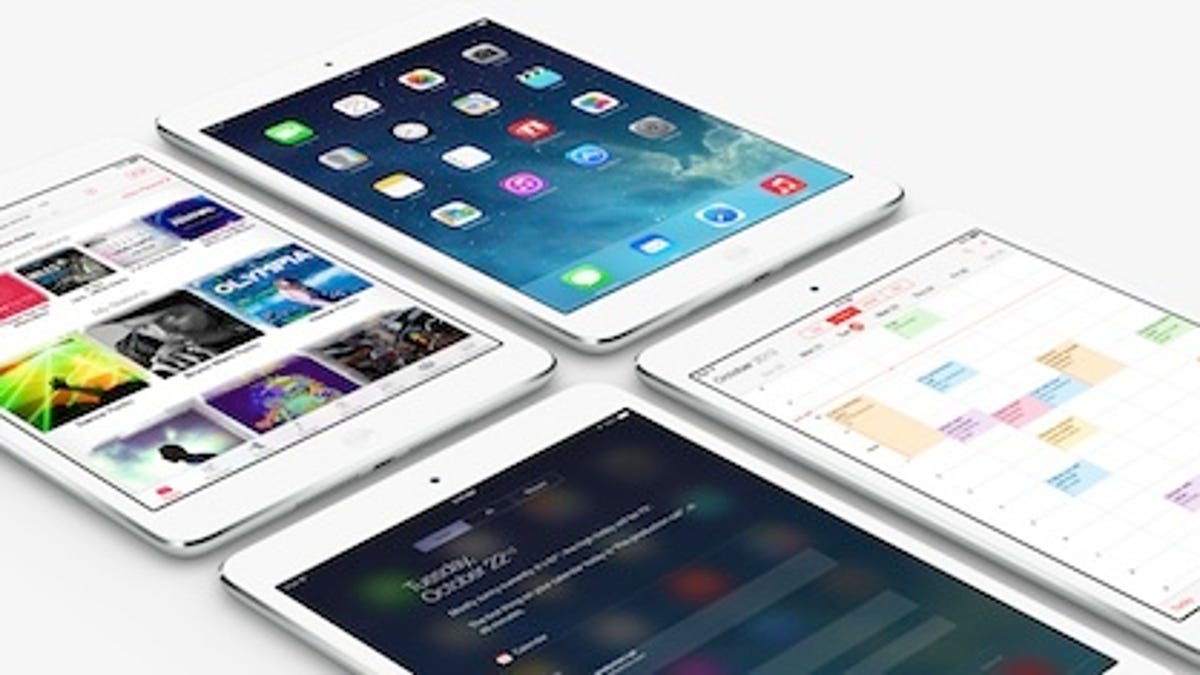For tablets and cellular, it's go time
Tablets typically have not wandered far from Wi-Fi. But their unique mix of media gluttony and easy mobility are putting the spotlight on the oft forgotten modem.

In 2010, the iPad wedged itself into the market between the smartphone and laptop using the operating system of the former but something closer to the screen of the latter.
Apple's tablet has long offered cellular connectivity as an option, but tablets have developed a reputation for being homebodies, at least compared to their pocket-sized, cellular-equipped smartphone cousins. Indeed, the falling prices and declining sizes of tablets have resulted in a number of products where Wi-Fi is the only practical option at this point.
However, changes in the cellular landscape are not only making the case stronger for cellular connectivity in the tablet, but are changing the demands on modems for smartphones as well.
The growth of HD multimedia. The living room, of course, continues to be the best setting for high-definition, passive video consumption. However, there's no denying that larger smartphones and tablets are making video on the go more prevalent. One recent estimate suggested that 15 percent of total video consumption hours are done from a mobile device. And while it may not be as much fun as watching the latest Hollywood blockbuster, we are increasingly relying on connectivity for basic tasks such as music and document storage and sharing. Without connectivity, the Pandora icon is little but the 16th letter of the alphabet set against a field of white.
The shrinking size gap. Yes, the tablet may sometimes be a little too much to carry, but as "phablet" smartphones continue to grow, the gap between them and what we consider bona fide tablets continues to shrink. Phones are creeping up into the mid-6-inch range; it's only a matter of time before someone (perhaps someone like Samsung) tries something in the upper 6-inch range and further presses against the 7-inch smartphone/tablet divide. Cellular connectivity isn't, of course, confined to smaller tablets. There's the iPad and the new Nokia Lumia 2520, and Microsoft vows that a cellular-equipped Surface is in the wings. However, the more portable a tablet is, the more likely it is that we'll take it along even if it doesn't quite fit in a pocket.
More flexible cellular pricing models. The US is finally waking up to the realization that the rest of the world has had for a long time: there's much to recommend prepaid plans. The rise and subsequent acquisition of major prepaid carriers in the United States has enabled more flexible terms for smartphone and tablet buyers alike. Indeed, disruptive carriers such as Republic Wireless, Ting, and Zact promise savings and control over their cellular bill. Fighting against these upstarts are giants such as AT&T and Verizon, pushing shared data plans that make it more convenient and affordable to add tablets to an existing data plan.
LTE globalization. While some of these carriers require customized phones to implement their schemes, others allow you to just pop their SIM into any compatible unlocked device. Indeed, the trend has been toward mobile devices that can increasingly operate on virtually any cellular technology in virtually any location. Differences among carrier implementations and LTE frequency fragmentation continue to pose challenges, as does roaming onto Wi-Fi. But manufacturers are increasingly making phones that can operate not only in 80 percent or more of the world's countries, but among the major carriers in the United States. AT&T, for example, has rolled out a "global SIM" that can be shipped to virtually any country around the world and activated, a boon for tablets and the coming era of the connected car.
The perennial quest for efficiency. While not a new trend per se, the higher general data consumption encouraged by LTE as well as increased video consumption puts power efficiency at a premium. According to Qualcomm, which creates the Gobi wireless modem, the modem can easily consume half of overall power in a mixed-use scenario. However, this varies greatly as one might expect -- up to 90 percent when making phone calls and as low as 15 percent when watching video offline or over a Wi-Fi network when the display and processor are being utilized heavily.
Wi-Fi tablets, which unabashedly perform hours of Netflix viewing or 3D gaming, have had it easy. Increasingly, though, cellular connectivity stands to play a greater role in their development because economies of scale are increasing and incentives to connect outside of hot spots are growing.

